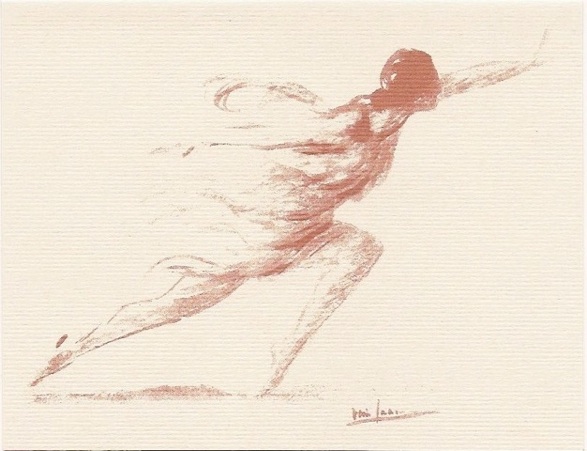DANCE OF NATURE: Isadora Duncan and the return of Integrative Education
We teach a form of body-mind integration based on Isadora Duncan’s theories of human development. In harmony with many indigenous modes of socialization, Isadora's approach builds upon what is natural for children.
This method allows children to experience Dance in the way they do it best — as a magical place where harmony, learning and love happen easily. Children love to move in groups, experiencing the magical natural harmonies that arise from choral expression. They love how dance holds them in something bigger than themselves.
We don’t approach dance as a bunch of dictated steps that the mind tells the body to do. Nor do we approach dance as a formless free-for-all focused on individualistic expression. These are both late Western degradations of the old magic. You can read more about Isadora’s approach below the class schedule.
Let us first teach little children to breathe, to vibrate, to feel, and to become one with the general harmony and movement of nature. Let us first produce a beautiful human being, a dancing child" - Isadora Duncan
Dance of Nature I: For ages 4-7
No Classes are currently scheduled.
Join our email list to hear about upcoming programs.
Dance of Nature II: For ages 7.5 - 11
No classes currently scheduled.
Anthropological evidence indicates that rites of passage at adolescence traditionally function on a foundation of symbolic learning that has taken place from age 7 to the cusp of puberty.
During this period of development, the symbolic capacity of the mind is integrating with the emotional capacity. It is urgent that children be given space for symbolic, soulful during this period to set up for a healthy adolescence. This work is very free, expressive and at times, quite wild. We make space for children to understand they can be as expressive as they wish, while also learning how to remain grounded through basic acting and movement technique and through immersion in a sense of the meaning of subject matter.
"Laura is the only person I know working at this depth in the realms of archetypal psychology and movement, taking profound psychological insight and making it integrated in the body. After dancing with Laura with my eight year old daughter, I noticed right away that it was healing our relationship. I am talking about deep unconscious things that kept coming up between us and causing conflict, and no matter how much parenting theory I read it did not change. Only when we started dancing together, it started to change. And very quickly."
Isadora Duncan & the return of Integrative Education
Isadora Duncan created the first integrative method of education in Western culture since classical times, and the only such method to place central emphasis on connecting the child to the Earth.
Integrative education is more complex than holistic education. In holistic education many aspects of intelligence are presented to the child, who is left to figure out how to bring them together. Integrative education provides a format where the pieces are brought together. In integrative study, the multiple intelligences of the child are woven harmoniously --allowing dynamic neurological and soulful connections to be made. Music, poetry, story, sculptural image, spatial patterns, ideas, physical challenge, emotional expression, and connection to nature are brought into the lesson within an atmosphere of social connection.
Isadora's holistic school in Germany (and later schools in France, Russia and New York), was hugely famous in her time. Rudolph Steiner visited to observe at the school many years before formulating Waldorf methods, which draw heavily on Isadora's methods. Her theories also influenced Jung in the formation of his depth psychology, laid the foundation for body-based psychotherapy, and many other cultural innovations.
Unlike many forms of eduation, the Duncan method radically changes its approach at each stage of development. Up to age 7, children 'flock' with the teacher, in light and very playful exploration of fairy tales. At age 7, the child begins to move on his or her own, and a new focus on folk legends expressing emotion, social imagination and personal weight is brought. At age 12, we shift to focus to mythology, design thinking, aesthetics and ideals. As a teen and an adult practice, we shift again toward a deepening into the individual's unique archetypal artistry within a body-mind-soul unity within the greater unity of life.
Isadora's method helps children's bodies remain fluid and graceful. At all ages, the thematic material brought in the lesson is directly related to the student's current development edge. Movement is allowed to arise from authentic enthusiastic response to this material, which is the only method of instruction that can instill grace of body and soul. You cannot force enthusiasm. This work is engaging for boys and girls, and provides a dynamic athletic foundation.
The impact of this work lasts a life-time.
